
What's Happened to the Forgotten People of Lahaina?
An Examination of Maui One Year After the Fires
A year ago, readers in Maui reached out to me to ask if I could publicize aspects of the tragedy they felt were not being heard in the mainstream narrative. After I reached out to my network, I realized that I was seeing many aspects of the same playbook I’d seen in other situations be reenacted and attempted to provide a balanced and objective assessment of what happened (along with a six month followup that also discussed a very concerning plan to flood the island with highly profitable lab altered mosquitos). The first article (linked to below) was well received and ended up being seen by over a million people:
What Really Happened In Maui
One of my main goals with this platform has been to help and support people who do not have the voice be heard (e.g., the forgotten victims of medicine). Since the Maui Wildfires started, I have received a lot of requests over email from readers in Hawaii to discuss what is happening there, so I’ve spent the last week trying to get a clear idea of that…
Note: all the notes like this I have received from supporters of this publication (with privacy necessary redactions) can be viewed here.
As I investigated the fires, seeing all the forces at work led me to a rather sad conclusion—like the 2018 Camp Fire (where the displaced residents were priced out of returning), it would almost inevitably lead to a large number of people being permanently displaced from Maui as very few resources would be devoted to addressing their needs and there was a lot of money to be made in replacing them. My goal in writing that article was hence to do something to help prevent that from happening. Sadly, now that a year has passed, much of that has come true. Consider for example this recent video from former Hawaii Congresswoman Tulsi Gabbard:
Because of all of this, I thus spent the last two weeks investigating the situation there for today’s article.
What Caused the Wildfires?
In a recent article about the attempted Trump assassination, I noted that America’s history is marked by suspicious events repeatedly occurring at the time when that tragedy is remarkably suited for helping to advance the government’s agenda (e.g., 9/11 allowed Bush to launch his preplanned wars in the Middle East).
Whenever you look at these events, three different dissident perspectives always emerge:
1. The event was created on purpose to enact a pre-existing agenda.
2. There was a strong reason to believe the event would happen and rather than address the threat, the government chose to drop its defenses so the event could happen.
3. The catalyst event was the result of corruption, incompetence, and bad luck.
The essential challenge with these events is that there is often a very good case to be made for each, so the specific possibility someone asserts to be true is always, to some degree, a product of the individual’s preconceived biases rather than an objective assessment of reality. In turn, one of the most common divisions I see in the alternative field is people getting very bitter at members of their group who endorse one of the other two possibilities for the event in question.
Note: I am personally biased towards the third option (incompetence and bad luck) because of how frequently I have seen it play out within institution I’ve been involved in and others I’ve studied extensively (e.g., airline safety).
In the case of the Maui Wildfires, a good case likewise exists for each as:
•There has been a strong motivation to displace the lower income (native) population of Maui.
•There are numerous unexplained abnormalities with the fires.
•There was a remarkable degree of incompetence with how the fires were handled.
Over the years, I’ve heard that the West Coast elite wished to turn Maui into a playground for the rich (e.g., a Switzerland of the Pacific) and in turn, many of the richest members of the left have spent a lot of money on real estate there (e.g., Oprah and Jeff Bezos or Mark Zuckerberg in Kauai).
Likewise, Hawaii has a long history of being exploited by a small group of wealthy families (i.e., the plantation owners) and in recent history, because land for luxury homes (rather than sugarcane) became the most valuable commodity the island had to offer, they’ve gradually transitioned to acquiring land and developing it.
Note: Hawaii is one of the “bluest” states in the country and most of Hawaii’s government is run by a corrupt Democrat political machine which is heavily influenced by those families. In turn, a great deal of Hawaiian politics are those families fighting against native Hawaiians who wish to preserve their ancestral rights.
Lahaina, in turn, was often thought to be a preferred target for these ambitions as it was highly valuable beachfront real estate but full of the cheapest housing for the island (which is where much of the workforce that sustains the local businesses reside).
In turn, if you look at the disaster, a variety of unusual things occurred which allowed the fires to rage out of control. When each of these events are looked at, those three interpretations again emerge (e.g., one local investigator shot video of three sites that were likely arson sites which started the fires—and something I learned from local residents is that Maui has a longstanding issue with arson problems).
In my own assessment, it was clear the fires were a result of corruption, incompetence and bad luck as:
•People from Hawaii have shared with me that the island has a longstanding history of its government being dysfunctional and major gaps in infrastructure existing (which likely explains why the fire hydrants failed in Lahaina and why the atrocious decision not to sound the Tsunami alarms or release water from above to Lahaina was made).
•A significant amount of flammable brushland was never cleared despite years of warnings it would lead to a disaster due to the costs involved in enacting that project.
•The utility company never made their power lines fireproof despite repeated warnings to do so (e.g., internal documents even cited the severe consequences California’s utility provider faced after the 2018 fire).
•Many of the buildings in Lahaina were older and hence not up to code (e.g., they were densely packed next to each other and built from highly flammable materials). Because of this, they presented an immense fire risk, but since they were grandfathered in, nothing was done about mitigating that risk.
At the same time however, harder to explain things also occurred (e.g., residents were blocked by police from leaving Lahaina as it burned down, trapping them inside and hence killing many of them). Likewise, despite numerous petitions, and a large state and federal investigation, there has still been no report released on the cause of the wildfire (which is peculiar given that at 102 deaths it was America’s deadliest fire in more than a century).
Since the governments often does this, members of the community got together to look into what happened. One group, Maui Community Investigations in turn has done a great deal of donor funded work to investigate the fires and collected numerous compelling pieces of evidence which shed light on exactly what happened (so I’ve spent a lot of time reviewing their website—where one of the most interesting things I learned was that the FAA banned drones from flying over Lahaina and seeing what was actually there).
That said, I felt the most likely culprit was the electrical company as for profit corporations frequently create massive disasters by neglecting their fundamental responsibilities to cut costs (e.g., this book shows numerous other egregious examples) and many people I spoke to there expected the courts would be tied up for years with people suing Hawaii Electric. However, last week, the Governor of Hawaii announced a joint 4 billion settlement to resolve all the lawsuits which had been filed (whereas in contrast the total costs of the fire range from 5.5 to 12 billion dollars).
Note: each of these points and the corroborating sources are gone into in more detail in the original article.
The Health of Lahaina
When I reviewed the events of Lahaina, one thing that jumped out at me was the health impact of it. For example consider Shawn’s story:
Shawn Dougherty, of Lahaina, was among the hundreds of residents forced to flee the resort city when the wildfire began engulfing their homes.
Like others, Dougherty said his only means of survival was to jump into the ocean with his girlfriend, but while some found safety in nearby jetties, the rocks and coral tore up Dougherty’s body.
“At one point, it seemed like I might drown,” he told ABC News. “I’m a good swimmer, but the water was just really rough because of the wind and the turbulence.”
When a first responder told them to get out of the water, Dougherty walked, only to find the situation even worse on land.
“I couldn’t even make it across the street because the pavement was so hot,” he said. “And now I have second-degree burns on the bottom of my feet.”
Finding the pain unbearable, Doughtery stuck it out in the water until firefighters carried him out. However, he lost sight of his girlfriend in the chaos and has been unable to connect with her since.
Or Etina’s story:
[Etina] Hingano, 54, watched from the ocean — her head and singed hand resting on a rock — as the deadliest wildfire in modern U.S. history scorched her historic hometown of Lahaina last week.
The rest of Hingano's body was submerged in the water so she would not get burned again by falling embers. Her face was caked in a layer of ash, which felt like paper when she splashed water on it.
In the pitch-black afternoon, when only the orange of the embers pierced through the thick plumes of smoke, Hingano stopped shivering for a moment. But then the noxious fumes came, burning her throat and starving her body of the little oxygen it had.
Around her, a crying toddler clutched a stranger’s neck, a family of five floated on a drifting piece of plywood, an elderly woman in a wheelchair sat on a pile of rocks, two teenagers rubbed their mother’s arms to keep her warm.
“I just remember thinking to myself, I’m going to die,” she said.
In the nine hours that they waited in roughly waist-deep water to be rescued, they battled hypothermia and lack of oxygen, as they summoned the strength to stay awake, dodge embers and avoid being swept out to sea.
Some of the survivors still had working cellphones, including Cochran, whose device had 16% battery life, and Noah, who video-recorded some of the ordeal. They called 911. But dispatchers told them there was currently no clear and safe path to reach them through the barrier reef at sea, and through the swarm of deserted cars on land, they said.
Nearby, hypothermia and the effects of low oxygen began to set in for Hingano and Cochran. The two held each other to stay warm, as they slipped in and out of consciousness.
Hingano had lost sight of Tam Lung, who she said eventually climbed back up the seawall, intent on seeing the land.
“He said, 'I just want to see Lahaina one last time the way it is.' He wanted to see it while it was still Lahaina,” Hingano said.
When she heard Tam Lung scream out her name, she stood up at the same time that a nearby car exploded. The force of the blast made her fall back into the water. "The fumes overtook me," she said.
It was the last time she heard his voice.
"The wind kept blowing the smoke straight towards us. We were breathing it in for hours," said Pakaki, 54, who was born and raised in Lahaina. "That’s why I thought I wasn't going to make it — not the fire, but the smoke."
For three days after the fire, Hingano said, "all I spit out was black."
Note: this video shows what it was like to be in the ocean at that time.
This thus was a recipe for significant trauma and respiratory problems (something we commonly see develop after wildfires—and which to some degree can be treated with nebulized glutathione). In turn, those issues were observed by the Maui community, and recently quantified by a large research study that on January 5th began recruiting people who lived or worked in Lahaina. On February 8th, the preliminary results from the first 224 participants were released and compared to baseline data from before 2019. Briefly, the study found that six months after the fires:
•Only 24% of the participants remain in their pre-wildfire homes, 65%, are in temporary homes (e.g., hotels), and 11% have moved to new permanent homes.
•58% lost their jobs, 24% are still jobless and searching and 74% reported a drop in their household income. Additionally, 35% of households reported difficulties having enough food for the family (compared to a baseline of 20.5-23.7%).
•49% said their health is now worse than it was prior to the wildfires, 24% reported that they do not have steady access to medical care and 13% reported not having health insurance (compared to 1.7% of Maui residents being uninsured in 2022).
•Over 20% had elevated blood pressure, 8-18% of participants had blood work indicating compromised kidney function and up to 74% of participants had signs ofpoor respiratory health (49% exhibited signs of mild to severe lung obstruction, and 33% had compromised lung function linked to impaired tissue oxygenation).
Note: lung injuries often follow wildfire smoke exposure, but this is first time I’ve seen the extent of this problem quantified. Presently, I believe many of those issues result from the positively charged smoke particulates destroying the glutathione lining of the lungs, injuring the endothelium and impairing the physiologic zeta potential.
•55% reported depressive symptoms (compared to a baseline of 33%), with the rates increasing with age (e.g., depression was reported by 75% of those between 50-59 years old). Additionally, 34.6% reported low self-esteem (compared to a 13-14% baseline) and 1.3% reported suicidal thoughts compared to a 0.8% baseline). Finally the majority of respondents reported anxiety, but no comparative baseline was provided.
•The participants reported that they found community aid organizations to be more helpful than FEMA, state aid agencies or county aid agencies.
In the University of Hawaii’s most recent data release, they found that the majority of the fire survivors were experiencing significant symptoms (associated with wildfire smoke exposure) at least once a month and that the majority (60.4%) had not received medical attention for their symptoms.
Note: presently this survey includes at least 679 people from both Lahaina and Kula (the other area where fires occurred).
Maui’s Housing Crisis
In medicine, a common observation is that the second injury to the same area is often much more injurious than the first (e.g., this holds especially true with concussions—which is particularly unfortunate since having a concussion makes you much less aware of your surroundings and hence likely to get another head impact).
In Maui’s case, COVID-19 was particularly devastating for them as the state was largely closed during COVID-19 to prevent the virus from entering the island (which didn’t work) and hence destroyed many of the small businesses (and jobs) which depended upon tourism and did not have the reserves to stay afloat throughout the pandemic. Likewise, Hawaii’s left-wing government had strict requirements for businesses (e.g., restaurants) to only serve vaccinated customers, which led to further closures and job losses. Because of this, Hawaii lost more small businesses than any other state in America, and 6 months into the pandemic, 25% of local businesses had already closed and the majority reporting a roughly 50% loss in revenue compared to the year before. Likewise, many strongly objected to Hawaii’s governor initially advising tourists to avoid Maui as much of the local economy was dependent upon tourism.
In parallel to this, Hawaii experienced a rapid inflation in housing costs (since many wealthier people decided to move to Hawaii during the pandemic lockdowns). As a result, home prices skyrocketed. For example, in 2019, the medium home price was $741,355, and since then (especially after the fires), it’s skyrocketed to 1.35 million in June 2024.
Note: the average (not median) sales price increase is even higher since many of the purchases were for expensive luxury properties.
This loss of work (and affordable housing) has thus led to many people leaving. For example, during COVID-19, 29,684 people left Hawaii (2% of the population—with the greatest migration seen from Oahu) and similarly, after the fires, over 1500 families left Maui. Likewise, local businesses are now struggling to find employees, which has resulted in the average starting wage going to around 26 dollars an hour (whereas it was closer to 15 prior to the wildfires).
Because of this, many felt the number one priority would be to ensure housing would be available for those who had lost their homes and hence suggested addressing this by:
•Cutting the red tape (Maui has a notoriously difficult planning department) for rebuilding the destroyed homes (which for context is something many other places have done after natural disasters since they wanted to rebuild).
•Making Lahaina be ready for rebuilding (e.g., by recreating the critical infrastructure buildings needed or having insurance claims be paid out to people who lost their homes).
•Placing tiny homes on the island that displaced residents could make their home.
Remarkably, despite a lot of effort being done for each of these (e.g., many tiny homes were donated and compassionate land owners offered to host them), they were largely unsuccessful (e.g., the tiny homes were blocked from being deployed, there has been an immense pressure to label the land as too contaminated to live in and its only now that vacant lots are even beginning to become available).
Instead, the chosen solution was to have FEMA and the State of Hawaii pay an immense amount of money to host the survivors at hotels (which, at least in some cases, often a fairly unsafe living environment).
About 2,650 displaced people continue to occupy hotels and condominium rentals that have cost taxpayers up to $1,175 a night
In March, that money began running out, so they attempted to transition the residents to long term housing—which due to the shortage of housing on the island, was accomplished by paying much higher rates for the houses (with half of the ones paid for remarkably remaining vacant).
More than 400 others who lost homes are in short-term housing that the state is renting for as much as $11,000 a month.
This in turn led to landlords kicking their existing tenets out for the FEMA money and the overall cost of rental housing rising by about 50%. Given that the FEMA rental assistance program ends in 6 months and that many of the fire survivors have no way to afford the overpriced real estate market, this thus illustrates how the government spending money on a problem (hundreds of millions in this case) often makes things worse (e.g., student loans have tripled the inflation-adjusted cost of a college education while simultaneously dramatically dropping its quality).
Note: there were also beuqacratic issues with FEMA failing to reimburse landlords who offered housing.
Likewise, as best as I can tell, much in the same way the US government has spent over 100 times as much money on the War in Ukraine as the people of Lahaina, very little of the aid money which went to Lahaina actually went to doing anything helpful for the people there (a trend commonly seen in disaster capitalism). Rather, local activists feel most of it simply went to enriching outside parties (rather than local organizations) who profited off the disaster and gave very little in return. It was specifically for this reason in my original article that I advocated for donations to go towards local groups with a track record of helping the community.
As best as I can tell, Maui’s mayor attempted to help prevent the inevitable exodus of people (e.g., he allowed people who lost their homes to not have to pay property tax and put a moratorium on raising existing rents or evicting people), his office was overwhelmed and could not take the bold steps necessary to stop this crisis. In turn, a series of less ideal approaches have been enacted.
For example, the Maui’s planning commission just voted to ban 7,000 apartments which had operated as vacation rentals from continuing to serve in this capacity in the hopes it would cause those units to be converted to long term housing. This measure was controversial since it was unclear if the intended effect (them becoming housing for residents) would result, it violated the agreement (and investment) owners of those units had made to become certified as vacation rentals, and it would result in a significant economic damage that greatly outweighed any benefits it created (e.g., $1.67 billion in tourism money, $747.7 million in employee earnings and $137.6 million in tax revenue). Furthermore, given how controversial this measure was, it was likely to be tied up in court for years and hence unlikely to help the people currently in need.
Being somewhat cynical, in the same way FEMA wasted its money on hotel stays, I can only view that measure as a push by the hotels (which charge 5-10 times as much as vacation rentals) to monopolize the vacation market and make Hawaii inaccessible to less affluent tourists. However, people I’ve talked have insisted this is primarily due to naive leaders in government who do not understand the consequences of their actions (e.g., allegedly an economic study was not conducted prior to the proposal being put forward by the mayor).
Currently, as things stand for the fire survivors:
•Many of them are being hosted by relatives (in now very crowded households).
•Many being housed by the government have had to be repeatedly moved (often at short notice), which is a very stressful thing to go through.
•Many are living on homeless encampments (e.g., on the beach), but sadly (according to a few readers whose accounts I have not been able to confirm), the government recently began abruptly dismantling them.
Note: I just received an email from a reader which stated: “The encampment was on a beach between Kaanapali and Lahaina. The first time the police came at around 2:00 in the morning to move people off. Then they came back two weeks later.”
•As mentioned before, many have simply left.
Note: one of the most noteworthy stories I heard is that FEMA was paying for Lahaina victims to fly back to the mainland and giving them 6 months of rent to start a new life here. Unfortunately, I have not been able to find any official documentation verifying this. If any of you are in Maui and can provide additional information on this subject or anything else that is currently happening for the readers of this publication, that would be greatly appreciated.
Conclusion
One of the unique things about Hawaii’s culture is its “Aloha” and the tendency of people there to kind to others and support whoever is in need. In turn, the most remarkable story of the Lahaina disaster is how well the local community responded to the disaster despite the government doing everything they could to get in the way. For example, locals brought supplies to Lahaina by boat after the government closed down the roads to Lahaina and one of the things which most astonished the Red Cross when they arrived was that the distribution hubs for aid had already been set up—something which typically never happens in disasters.
Many in turn suspect that the original plan was to evict the residents and turn the area into an expensive tourist district (e.g., a widely protested bill was proposed that would give a 9 member panel appointed by the governor the sole authority to decide what would happen with rebuilding Lahaina and the governor likewise has made numerous harshly criticized statements which suggested this intention). Nonetheless, there was such a strong outcry from the local community (who all worked together to protect themselves) that this attempt was unsuccessful. As such, we are instead witnessing a gradual process of them effectively being starved out by a lack of affordable (or even accessible) housing.
In this publication, I have repeatedly written about the theme of “economic feudalism” an approach to social management where the everyone besides the upper class becomes so impoverished they have no choice but to obey the corporate dictates they are given—which I would argue explains why there has been such a surge in the unchecked power of corporations and such a systemic dismantling of America’s middle class (especially during COVID where many non-corporate sources of employment vanished and individuals had to chose between receiving a dangerous injection or losing their livelihoods).
In turn, I view the most pivotal lesson of Lahaina being the importance of Aloha, as it is likely we will all face (if we haven’t already experienced it) the same harsh conditions they are facing and a complete lack of support from the government to get out of them. Because of this, many in this movement (myself included) believe the only way forward is to build up resilient and self-sustaining communities which are not dependent upon the system (which in turn requires your compliance) to survive.
Likewise, one of the most common ways the ruling class enslaves us is by creating artificial divisions and baiting the common people into fighting against each other rather than recognizing their common cause and how they all need to work together (hence why I try to avoid delving into unnecessarily divisive topics). Maui, in turn, provides one of the best lessons for how to do this (e.g., Aloha prevents those divisions from overtaking a community), so in this article I wanted to emphasize not only how remarkable their response was, but also how critical it is for us to learn from it.
Put differently, Maui is one of the most beloved places in the world, but despite the outpouring of support this reputation earned it and how tightly they work together, they are still just barely hanging on. Were those factors not at play (which they often aren’t—consider for instance how much East Palestine’s plight was ignored) the outcome would hence be much worse, so it is critical we learn from them before a similar situation arrives at our front door.
Note: one of the things I’ve really been noticing from comparing the insightful comments here to many other communities on this platform is how collaborative, supportive and non-confrontational the commenters here are. I did my best to nurture that type of a discourse, but I am still astounded by the community that has emerged, and I thank you deeply both for that and the broader support you have given which has made this newsletter possible.
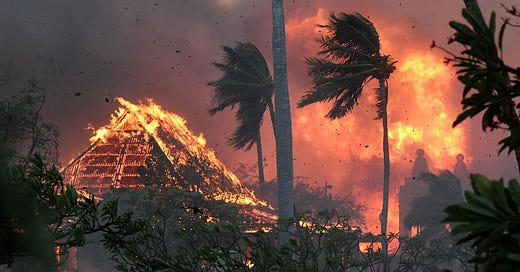


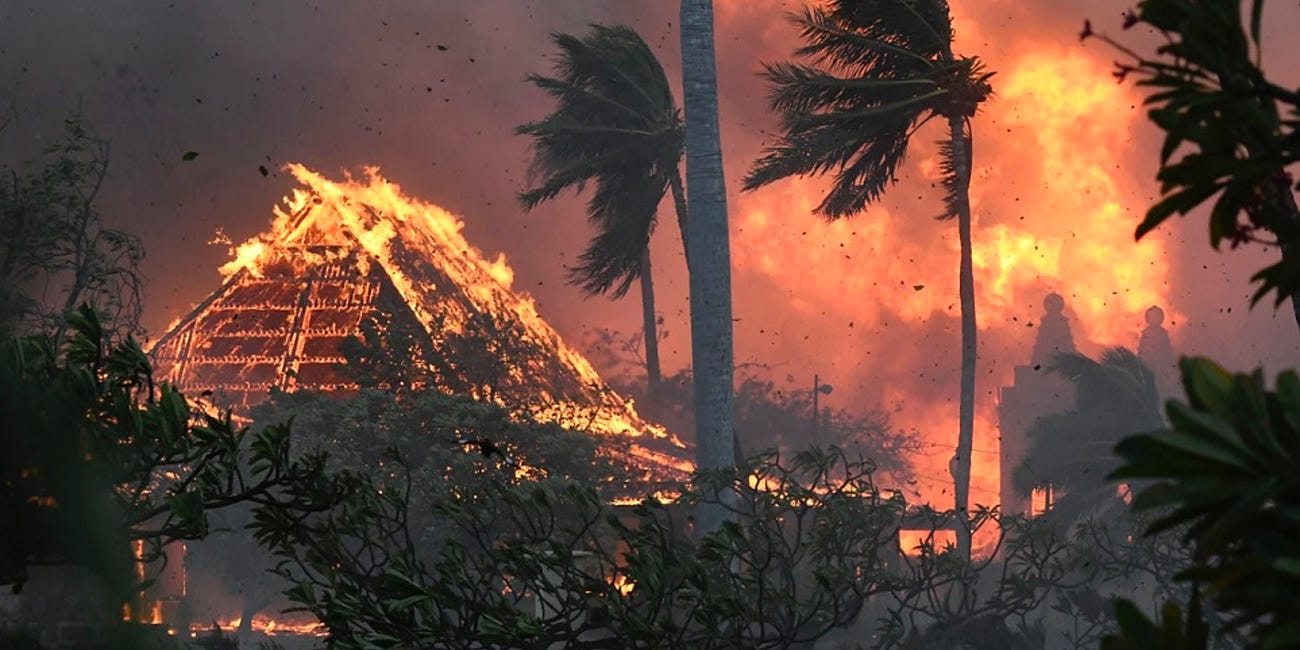

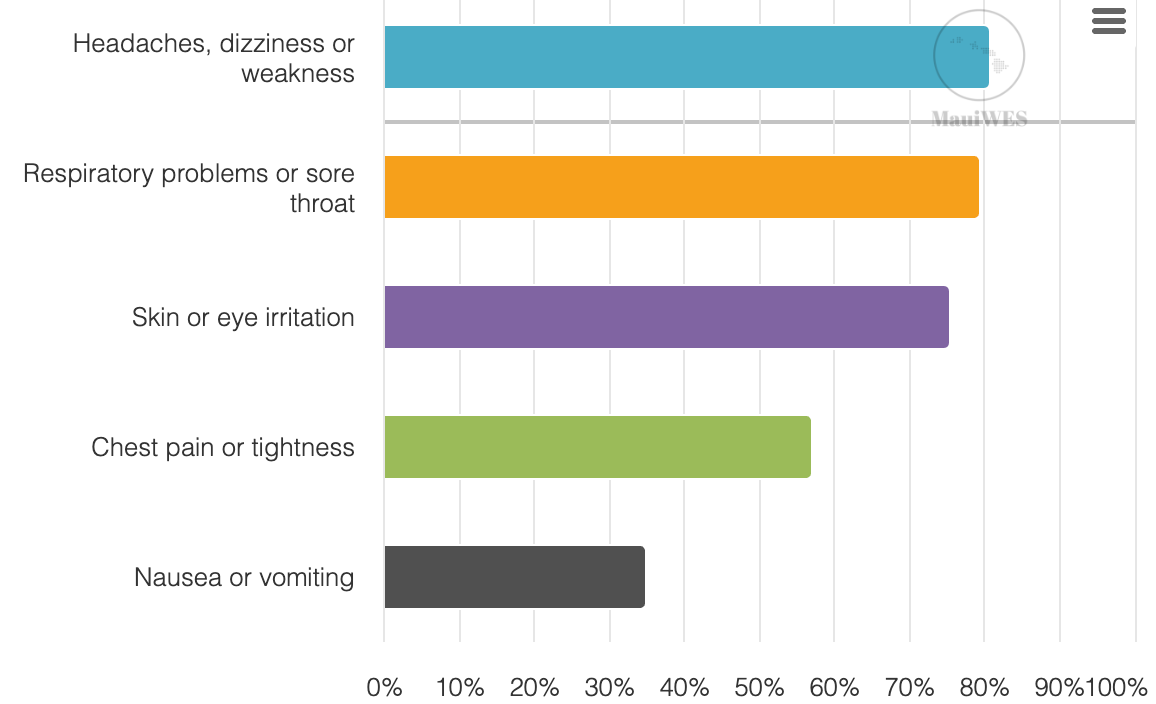






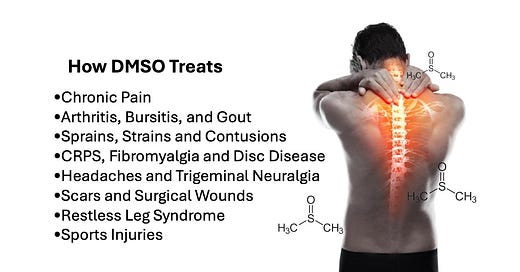

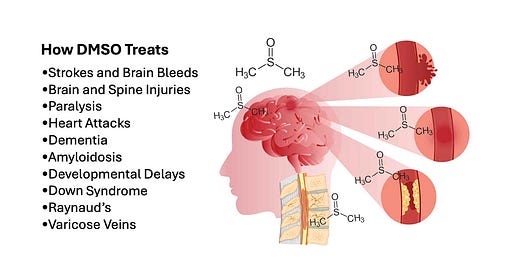

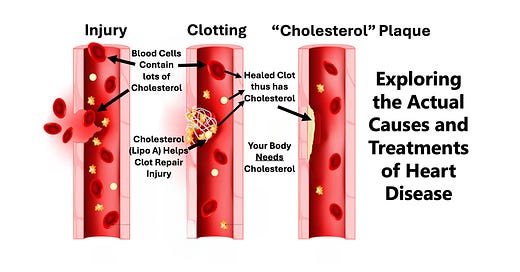

If the fire wasn’t nefarious
And If the intentions weren’t nefarious
The response would be entirely different!
All of this- was and is- the intended outcome
I am stunned sometimes by man’s inability to accept the most logical answer to something… mainly because the truth is extremely painful.
They mean to harm the native Hawaiians and steal their land… and move the poor working class of Maui off that land and rebuilt it into the first smart city in the US …
In 2024… in this ridiculous alleged era of diversity equity and inclusion …. That is what they’re doing
It’s much more than incompetence
It’s all intentional.
This is why Tulsi Gabbard is on the no fly list.